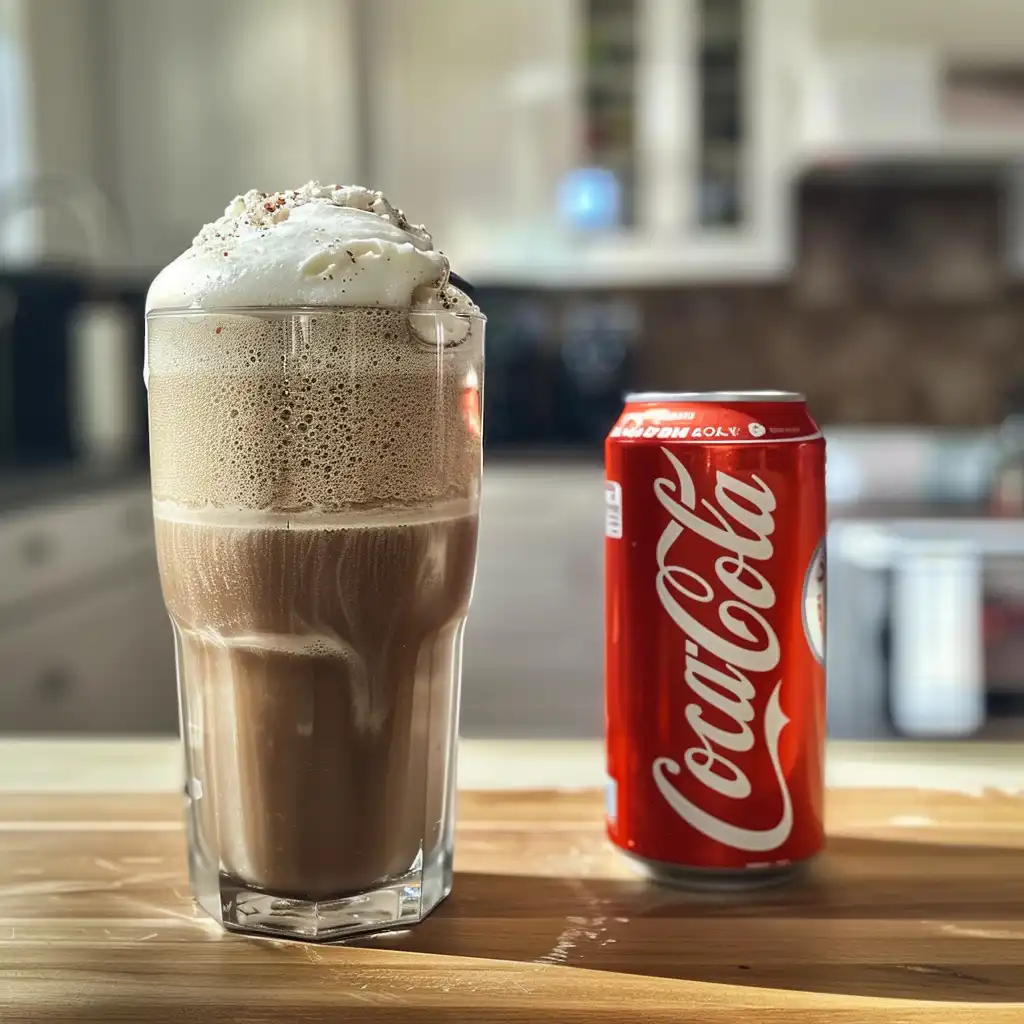Diet Coke Protein Drink : Does It Actually Help You Slim Down? That’s exactly what I asked myself after stumbling across a viral video where someone mixed their protein powder into a cold can of Diet Coke. As someone who’s always curious in the kitchen and on a journey toward better wellness—without giving up the little pleasures—I had to give this odd combo a try.
Over the years, I’ve learned that food trends come and go, but what sticks with me are the things that actually feel good in my body. So I put this Diet Coke protein drink to the test: how it tastes, how it made me feel, and whether it added anything useful to my daily routine.
In this article, I’ll walk you through everything I discovered—nutrition details, my personal experiences, tips for making it at home, and honest thoughts on whether it really supports weight loss goals or just adds more fizz to a confusing trend.
Discover great ideas like this mushroom-based slimming coffee if you’re curious about other energizing low-calorie drink trends.
Table of Contents
Let’s dive into what this buzzy drink is all about.
What is a Diet Coke Protein Drink?
What Makes It Different From Regular Diet Coke?
At first glance, it might sound like just another kitchen dare, but the Diet Coke protein drink has caught on—especially on social media—as a quirky way to get more protein without adding too many calories. Unlike regular Diet Coke, which is a zero-calorie soda sweetened with aspartame or sucralose, this version involves mixing a scoop of protein powder—usually whey or plant-based—directly into the soda.
The idea here is to combine the fizzy, satisfying bite of Diet Coke with the functional benefits of protein. It’s not a product you’ll usually find premade in stores (though that could change), but a DIY hybrid people are making at home. It may sound unusual, but I have to admit—after my first sip, I understood the appeal.
Types of Protein Used in Diet Coke Blends
When I tried it myself, I tested a few protein powders before finding one that actually blended well. Here’s what I found:
From my experience, collagen was the easiest to mix, while whey gave the most satisfying post-drink fullness. Plant-based powders needed a bit more patience, but still worked if you used a blender bottle.
Check out this natural Mounjaro weight loss drink to compare how different functional beverages support fat-burning goals.
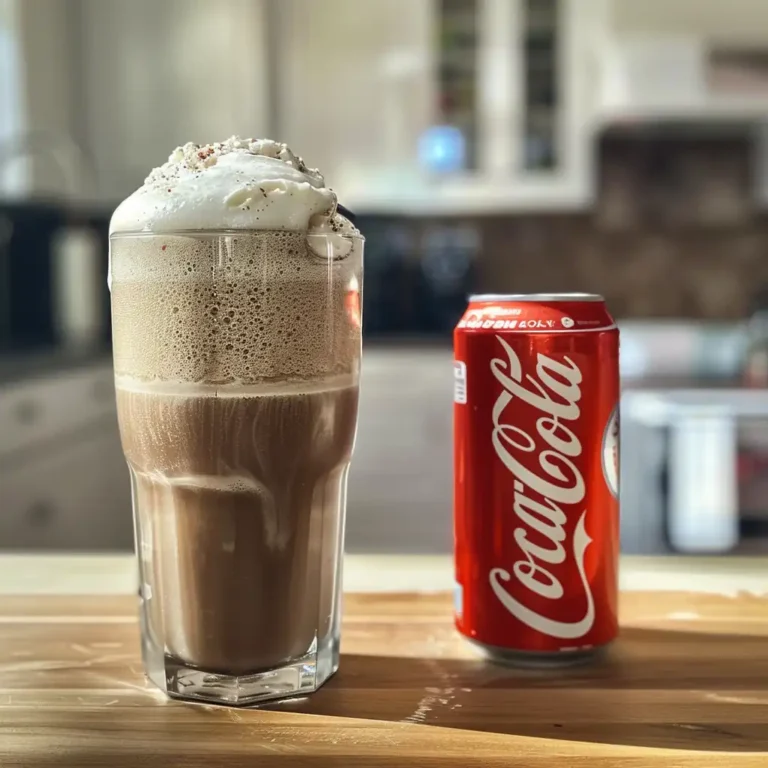
Diet Coke Protein Drink: Does It Actually Help You Slim Down?
A trendy, low-calorie, high-protein drink combining fizzy Diet Coke with your favorite protein powder. Popularized on TikTok and now a functional snack hack!
- Total Time: 5 minutes
- Yield: 1 serving 1x
Ingredients
- 1 can chilled Diet Coke (any flavor)
- 1 scoop protein powder (vanilla whey, chocolate whey, collagen, or plant-based)
- Optional: ice cubes
Instructions
- Chill your Diet Coke in the fridge until very cold.
- Pour about half the can into a shaker bottle or large glass.
- Add protein powder slowly to avoid overflow.
- Shake gently or stir until smooth and mostly foam-free.
- Pour in remaining soda, let the fizz settle.
- Sip slowly to prevent bloating from carbonation.
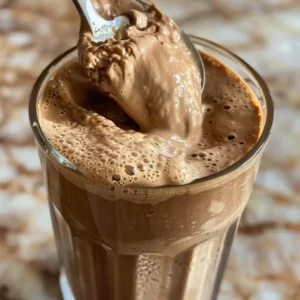
Notes
Use collagen for easier digestion. A blender bottle works best to avoid clumps. Don’t chug it—carbonation + protein = potential bloat!
- Prep Time: 5 minutes
- Cook Time: 0 minutes
- Category: Snack
- Method: No-Cook
- Cuisine: Fusion
- Diet: Low Calorie
Nutrition
- Serving Size: 1 drink
- Calories: 80
- Sugar: 0g
- Sodium: 90mg
- Fat: 1g
- Saturated Fat: 0g
- Unsaturated Fat: 1g
- Trans Fat: 0g
- Carbohydrates: 2g
- Fiber: 0g
- Protein: 20g
- Cholesterol: 30mg
Why People Are Mixing Protein With Diet Soda
Social Trends and TikTok Buzz
It started as a playful experiment—people mixing their daily protein powder with their favorite soda and posting their reactions online. Before long, the Diet Coke Protein Drink was everywhere on TikTok, with creators calling it the “perfect low-calorie muscle builder” or “a fun twist on your boring post-workout shake.”
Curious as ever, I clicked through a few of these clips. Some swore by it, others gagged mid-sip, but one thing was clear: folks were intrigued by the idea of making something indulgent feel “functional.” The combo seemed to promise that you could chase fitness goals without giving up small pleasures like soda.
While I wouldn’t call it revolutionary, I do think this mix caught on because it feels like a little loophole—a “cheat” that doesn’t really feel like cheating.
Don’t miss our guide on what is the coffee loophole diet for another creative take on caffeinated drinks that may aid in slimming down.
Personal Stories: Why Diet Coke Protein Drink Tried It
For me, the draw wasn’t just about following a trend—it was about curiosity. I’ve been experimenting in my kitchen ever since a trip to Italy showed me how much joy can come from simple, surprising ingredients. So when I saw someone blend vanilla whey into Diet Coke and call it a “root beer float for gym people,” I thought, “Alright, Sifaw, time to try this yourself.”
I started with a chilled can and a scoop of chocolate protein powder. Spoiler: it foamed like a volcano. Lesson learned—add the powder slowly, or better yet, use a shaker bottle. But once I got the mix right, it actually tasted… decent. Like a fizzy chocolate soda with a creamy twist. Not gourmet, but weirdly satisfying.
Later, I tried collagen in a citrus version of the Diet Coke Protein Drink. That one went down easy and left me feeling light. I didn’t expect it to replace a meal or anything, but it held me over between lunch and dinner on a busy day.
Looking for inspiration? Try moringa detox water for weight loss—a gentle, plant-powered option that might pair well with your high-protein diet days.
Nutritional Profile Breakdown
Calories, Sweeteners, and Protein Per Serving
One of the main reasons the Diet Coke Protein Drink caught my attention was its promise of being both low in calories and high in protein. On paper, that’s a powerful combo for anyone trying to maintain or lose weight.
Here’s how a typical serving might stack up:
| Ingredient | Amount | Calories | Protein |
|---|---|---|---|
| Diet Coke (12 oz) | 1 can | 0 | 0g |
| Whey Protein Powder | 1 scoop (30g) | 110–130 | 20–25g |
| Collagen Peptides | 1 scoop (10g) | 35–45 | 9–10g |
That means you’re sipping anywhere from 40 to 130 calories depending on your protein choice—and getting up to 25g of protein in return. No added sugars. No fat. But one key thing to remember: this drink gets its flavor from artificial sweeteners like aspartame or sucralose.
Comparing With Traditional Protein Shakes
Traditional protein shakes often mix with milk or nut milks and can climb up to 250–300 calories per serving—sometimes more with added fruits or peanut butter. That’s perfect if you’re using them as meal replacements. But if you’re just looking for a quick protein boost with fewer calories, the Diet Coke Protein Drink might be the better fit.
Here’s a quick side-by-side comparison:
| Drink | Avg. Calories | Avg. Protein |
|---|---|---|
| Diet Coke + Whey | 120 | 25g |
| Protein Shake w/ Almond Milk | 200 | 20–30g |
Learn more about the full coffee loophole diet here if you’re exploring drink hacks beyond the usual soda swaps.
Does Diet Coke Protein Drink It Actually Help With Weight Loss?
How Protein May Affect Appetite and Satiety
From my experience with food—and a whole lot of trial and error—protein has always helped me feel fuller, longer. And that’s not just a feeling. Many people find that increasing protein intake throughout the day may support satiety, which means fewer cravings, smaller portions, and sometimes even delayed hunger.
When you combine that with a low-calorie drink like a Diet Coke Protein Drink, you get something that feels indulgent but doesn’t spike your daily calorie intake. For someone watching their portions, this kind of combo can feel like a little win. But the key thing to remember? It’s not a magic solution.
While this drink might help manage hunger, it won’t melt pounds on its own. I’ve learned that real progress comes from consistent choices, not just quirky hacks.
The Role of Low-Calorie Beverages in Caloric Deficit
If your goal is to lose weight, the number one principle that matters is creating a caloric deficit—burning more calories than you consume. A Diet Coke Protein Drink can be a smart addition to that plan if it replaces a higher-calorie snack or helps reduce overall intake.
Here’s how I’ve used it:
- As a midday pick-me-up instead of a sugary latte
- Post-workout when I didn’t want a full meal
- On busy afternoons to hold me over until dinner
It’s convenient, fills a gap, and doesn’t feel heavy. But I’ve also noticed that drinking it too often made me want more soda throughout the day. So I had to dial it back and use it more mindfully.
Explore more ways to cleanse naturally with this moringa detox routine, especially if you’re sensitive to carbonation or artificial sweeteners.
My Personal Experience With Diet Coke Protein Drink
What I Noticed in My Body and Energy
The first time I tried a Diet Coke Protein Drink, I wasn’t expecting much beyond fizz and foam. But once I got the mix right—one scoop of vanilla whey slowly stirred into a chilled can of Diet Coke—it actually surprised me.
Here’s what stood out after a few days of sipping it as an occasional snack:
- Energy Boost (Without the Crash):
Thanks to the caffeine in Diet Coke and the protein, I felt alert and more stable. I didn’t get that post-latte slump. - Appetite Control:
On days when I had it mid-morning, I noticed I wasn’t rummaging the kitchen by 11 a.m. It kept me comfortably full for a couple of hours. - Digestive Response:
This part’s important. When I used a dairy-heavy whey, I felt a bit bloated. But switching to collagen made a big difference—lighter, smoother, no gut drama.
Still, I didn’t treat the Diet Coke Protein Drink like a miracle fix. It was just another tool in my routine—helpful in some moments, unnecessary in others.
What I’d Do Differently Next Time
After playing with this fizzy combo for about two weeks, here’s what I’d tweak if I started over:
- Smaller Serving:
A full can with a full scoop can feel intense. Half-can + half-scoop worked better for me. - Use a Blender Bottle:
Stirring with a spoon = clumps. A good shake = creamy texture. - Pair With Real Food:
Sometimes I’d have it with a boiled egg or a few almonds. That helped balance the drink’s “liquid-only” feel.
And finally, I’d be mindful of how often I was turning to it. I never want to depend on a drink to replace meals or real nourishment—no matter how trendy it is.
Hidden Risks and Controversies
Artificial Sweeteners and Gut Health Concerns
This is where things get a little murky. While Diet Coke is calorie-free, it’s still packed with artificial sweeteners like aspartame or sucralose. Now, I’m not here to scare you—I’m just sharing what I’ve learned from my own wellness journey and the questions that kept popping up.
Some studies have suggested that excessive use of artificial sweeteners may disrupt gut bacteria or lead to increased cravings over time. Personally, when I drank the Diet Coke Protein Drink daily—whether solo or mixed with protein—I felt a subtle shift in how my stomach responded. A bit more gassy. A little less “settled.”
That’s not to say it’ll happen to you, but it reminded me to listen to my body instead of just following what’s trending. Gut health is something I take seriously these days, and even though a fizzy treat feels harmless, overdoing it might backfire.
Can Diet Coke With Protein Backfire on Digestion?
Here’s something I noticed—and a few others mentioned it too online: when you mix carbonated soda with protein, especially dairy-based powders, it can create foam and bloating. It’s not dangerous, but it can be uncomfortable.
The carbonation stirs up the protein powder, and if you chug it fast, you might end up swallowing a lot of air. When I wasn’t careful, it felt like a balloon was sitting in my belly for an hour.
A few practical tips from my kitchen tests:
- Let the fizz settle after mixing before drinking
- Use cold Diet Coke straight from the fridge
- Sip slowly (seriously—it helps)
Even though I like the Diet Coke Protein Drink for its novelty and low-calorie profile, I’ve learned to enjoy it in moderation. I still keep it in rotation—but I also alternate with other options that feel gentler on my system.
Smart Alternatives to Consider
Protein Iced Coffee, Smoothies, and Sparkling Waters
If the Diet Coke Protein Drink doesn’t quite sit right with you—or you’re just craving variety—there are so many delicious, low-calorie alternatives that still deliver the protein punch.
Here are a few I’ve come to love from my own kitchen adventures:
- Protein Iced Coffee:
A scoop of vanilla or mocha protein in chilled brewed coffee over ice. It’s rich, satisfying, and actually feels like a treat. Bonus: it won’t foam up like soda does. - Fruit + Protein Smoothies:
I often blend unsweetened almond milk, frozen berries, and a scoop of unflavored collagen for a light, antioxidant-rich sip. It fills me up and doesn’t leave me feeling jittery. - Sparkling Water + Collagen:
When I want bubbles without the heavy soda feel, I mix flavored sparkling water with plain collagen peptides. It’s clean, easy, and tastes just like a soda spritzer.
Here’s how they stack up nutritionally compared to the Diet Coke Protein Drink—you still get your protein, but with different flavors, textures, and benefits.
Whole Food Sources That Offer Similar Benefits
And of course, sometimes the best option is just something from the fridge. If I don’t feel like drinking my protein, I go for:
- Hard-boiled eggs
- Greek yogurt
- Low-fat cottage cheese with cinnamon
- A slice of turkey breast with mustard
- Roasted chickpeas
They may not feel as trendy, but they’re reliable, clean, and come with added nutrients like fiber or healthy fats that soda-based drinks simply can’t match.
How to Make Your Own DIY Diet Coke Protein Drink
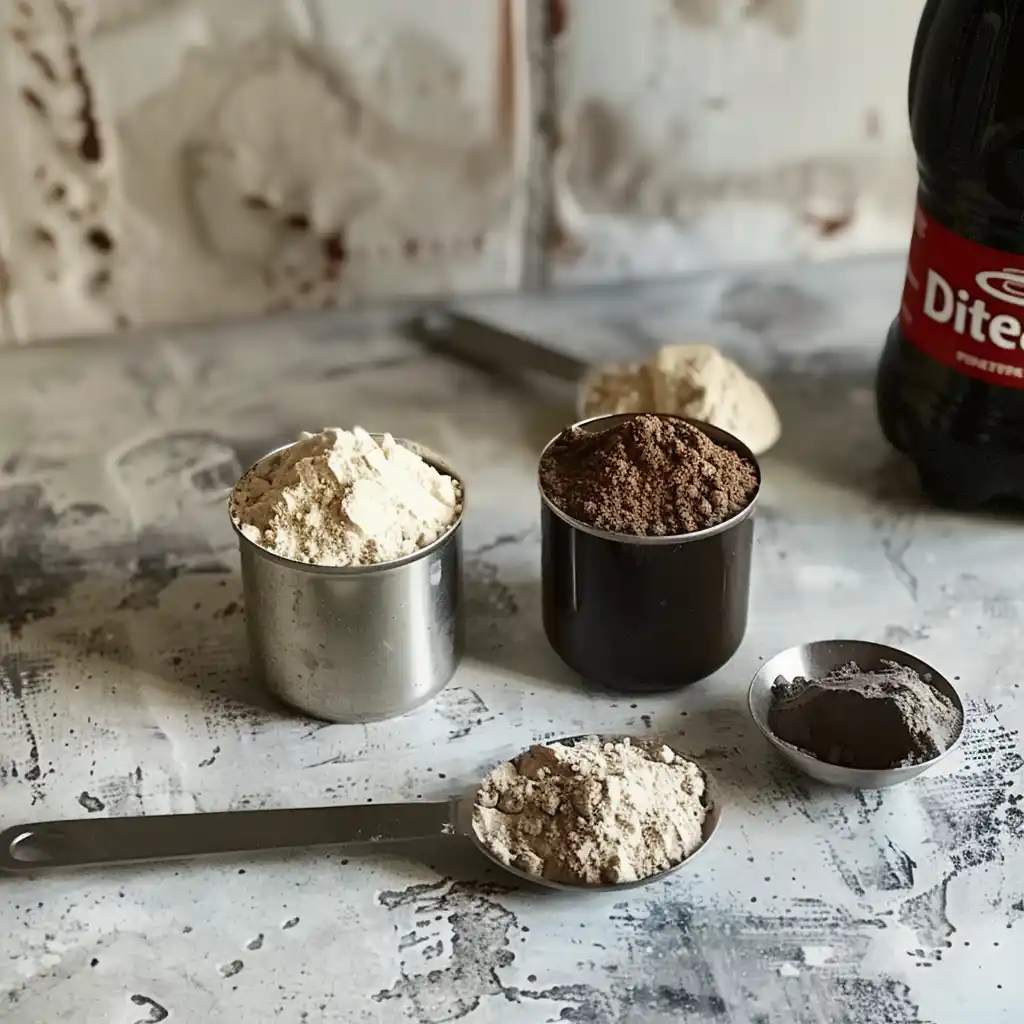
My Go-To Simple Mix at Home
After testing a few messy fizz explosions and weird flavor combos, I finally found a mix that works for me. It’s not glamorous, but it’s reliable—and you can tweak it to fit your taste.
Here’s my basic recipe:
Sifaw’s DIY Diet Coke Protein Drink (Vanilla Edition)
- 1 can chilled Diet Coke (12 oz, zero sugar)
- ½ to 1 scoop vanilla whey isolate (or collagen peptides)
- Optional: a few ice cubes
- A shaker bottle or jar with a tight lid
Steps:
- Start with chilled soda. (Room temperature = foam disaster.)
- Add the protein powder to your shaker first. This helps avoid clumping.
- Pour the soda slowly into the shaker—give it time to settle if it fizzes.
- Seal tightly and shake for 10–15 seconds. Let the foam rise, then settle.
- Pour over ice or sip straight from the shaker.
Tips for Getting the Right Texture and Flavor
This drink is more temperamental than a smoothie—here are some lessons I learned the messy way:
- Use isolate or collagen only. Concentrate or casein makes it too thick and gritty.
- Don’t use a blender. It adds air and doubles the fizz.
- Stick with basic flavors. Vanilla, caramel, or chocolate work. Fruity powders clash with cola.
- Drink it fresh. Letting it sit too long ruins the texture.
The Diet Coke Protein Drink definitely isn’t for everyone—but it’s an easy, low-calorie protein option when you’re feeling adventurous. And hey, if it’s not your thing, no shame. Sometimes these kitchen experiments lead you right back to the basics. But if you’re curious like I was, this mix might surprise you.
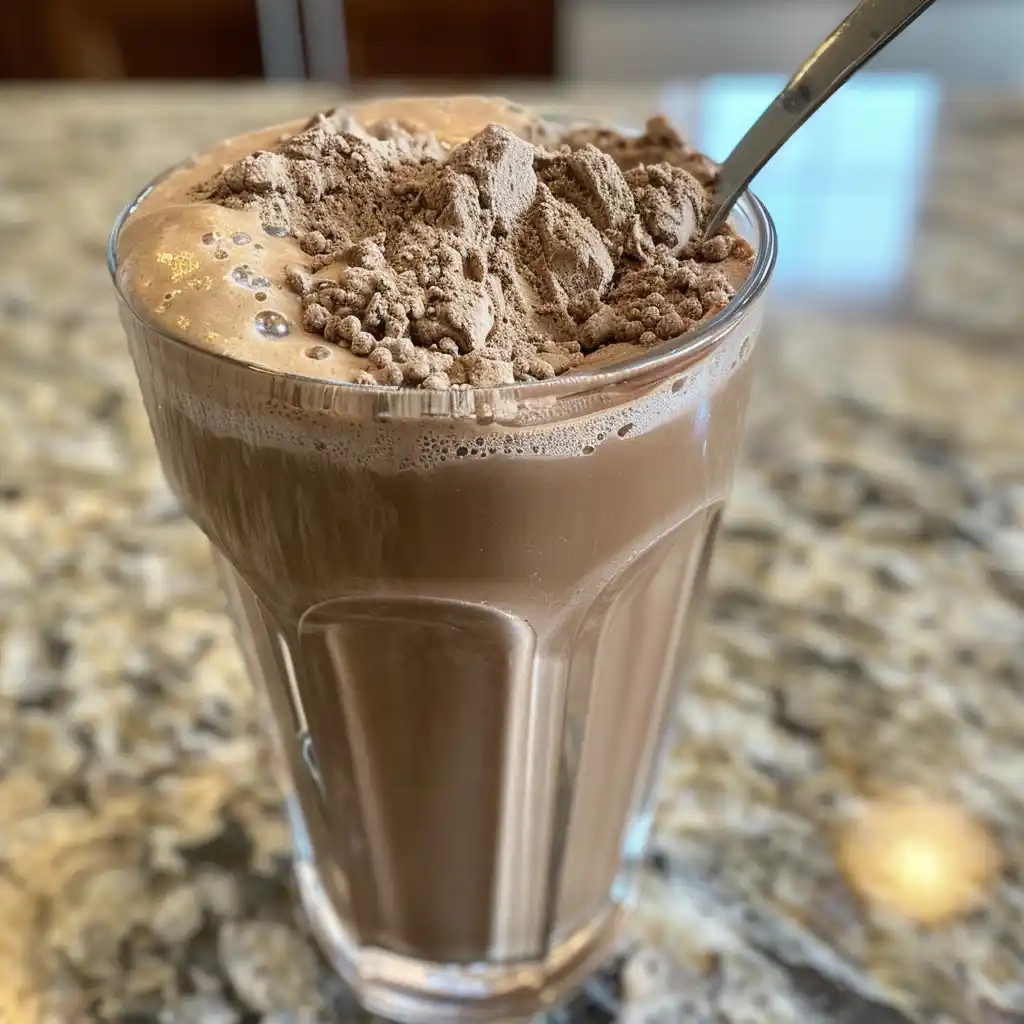
Expert Insights and Balanced Perspective
What Registered Dietitians and Trainers Say
While I’m just a passionate home cook who’s experimented a lot in the kitchen, I’ve followed enough nutrition experts to know one thing: context is everything.
Some dietitians see the Diet Coke Protein Drink trend as a low-risk, creative way to increase protein intake—especially for those who struggle to hit daily goals. But many also caution that relying too heavily on artificially sweetened beverages can have long-term drawbacks, especially for gut health and taste recalibration.
A few trainers I’ve spoken to online mentioned that it could help with post-workout protein needs if it replaces a sugar-heavy recovery drink. But most agreed: it shouldn’t replace real meals or whole food snacks.
And I get that. From my own journey, whenever I leaned too much into “shortcut foods,” I eventually hit a wall—tired, bloated, or just craving real food.
Why Moderation Is Still Key
It always comes back to balance. This drink can support a healthier lifestyle—but it’s not a strategy on its own.
If you’re using the Diet Coke Protein Drink occasionally, it might help curb snack cravings or squeeze in a few extra grams of protein. But if you find yourself drinking two or three a day and skipping meals, it might be time to pause and reassess.
What’s worked for me is seeing it as one small tool, not the whole toolbox. I still plan my meals around whole foods, use shakes when I’m short on time, and reach for this fizzy blend once or twice a week when I want something quick, fun, and functional.
Frequently Asked Questions
Should I drink protein shakes if I’m trying to lose weight?
From my experience, yes—but strategically. Protein shakes may help you feel fuller longer, which can support a calorie deficit. When I included shakes after workouts or between meals, I noticed fewer snack cravings. That said, they should complement a real-food eating plan, not replace it.
Is protein Diet Coke good for you?
It depends on how often you drink it and what you’re using it for. On occasion, it can be a fun, low-calorie way to add protein to your day. But relying too heavily on artificial sweeteners or skipping meals in favor of fizzy drinks might not serve you well long-term.
Do protein drinks burn belly fat?
Protein drinks don’t directly burn fat—but increasing your protein intake may help you manage hunger and preserve muscle while losing weight. From my own journey, I’ve found they help keep me satisfied, which made sticking to healthier choices easier.
Will I lose belly fat if I stop drinking Diet Coke?
Not necessarily. While cutting back on artificial sweeteners might reduce bloating for some people (it did for me), true fat loss comes from creating a consistent calorie deficit, not cutting out one food or drink alone.
Conclusion
Trying the Diet Coke protein drink wasn’t life-changing—but it was fun. It filled a gap, gave me a lighter protein option, and sparked creativity in the kitchen. I wouldn’t call it essential, but it’s earned a place in my “sometimes” list, especially when I’m short on time and craving something fizzy.
The biggest thing I’ve learned? Listen to your body. If it feels good, keep it. If it doesn’t, tweak it—or skip it. You don’t need to follow every trend. Just find what supports your energy, your mood, and your goals.
Follow more kitchen adventures on Facebook
Pin & share new ideas on Pinterest
